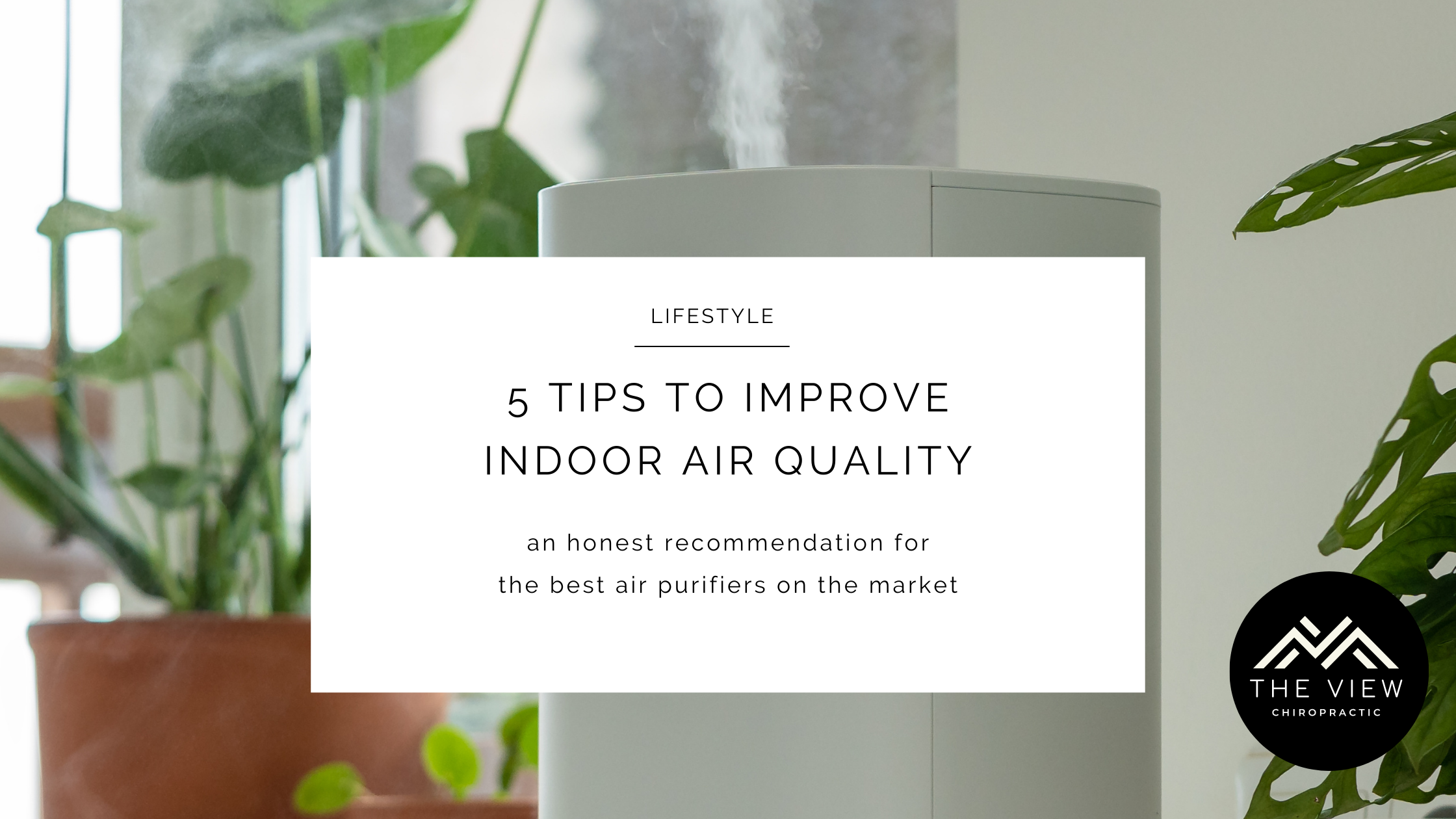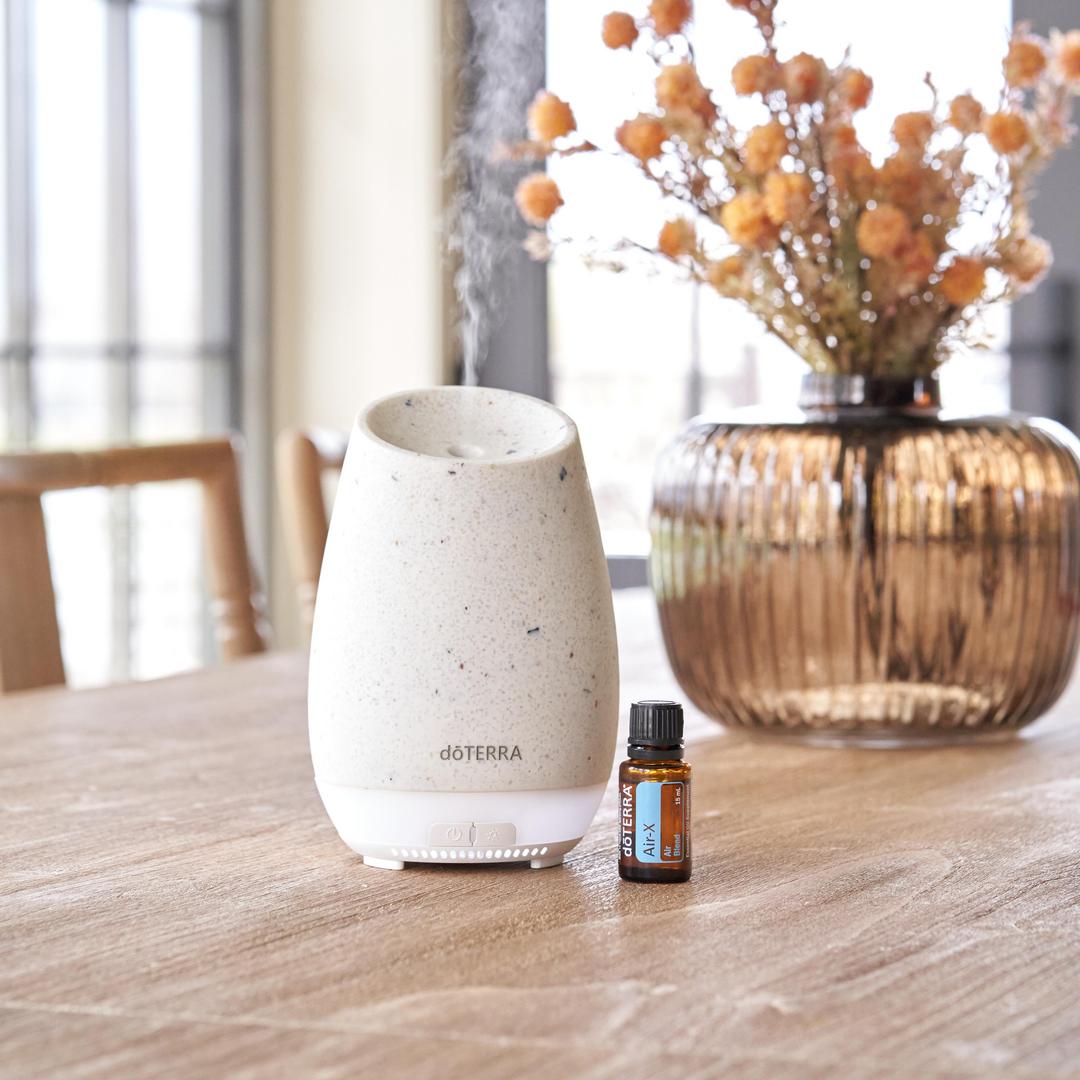Tips to Improve Your Indoor Air Quality
With spring in full bloom, there’s a lot to love about the season: vibrant flowers, longer days, and the buzzing energy of nature’s revival. But along with all the beauty comes a few less pleasant companions—like allergens, dust, and other indoor air pollutants. So, how can you keep your home feeling as fresh and lively as the outdoors without the unwanted irritants? Today, we’re diving into the world of spring air purifying.
The Sneaky Trouble with Spring
Spring is like that friend who means well but ends up causing more drama than you anticipated. Between the seasonal pollen, pet dander, and even chemical off-gassing from new furniture and paint, your indoor air can quickly become a minefield of irritants.
Here are a few common indoor air pollutants that tend to spike during spring:
-
- Pollen: It’s everywhere! Coming in through open windows and doors, pollen can settle in carpets, on furniture, and other surfaces, triggering allergies for many.
-
- Pet Dander: If you have pets, their shedding season is in full swing in spring. Pet dander can irritate your respiratory system, even if you’re not allergic to your furry friends.
-
- Dust Mites: These tiny creatures thrive in warmer, more humid weather. As temperatures rise, you might find an uptick in their population, and with it, increased allergens.
-
- Chemical Off-Gassing: If you’ve recently renovated or moved into a new home, or bought new furniture, you might notice that “new” smell. While it may seem refreshing, it’s actually a release of toxic chemicals into the air from these new items.
Understanding the impact of these pollutants on indoor air quality is crucial for maintaining a healthy living environment, especially during spring. Did you know that indoor air is considered 2-5 times more harmful than outside air? Monitoring and improving indoor air quality can significantly minimize exposure to airborne illnesses, lower toxic burden on the body, and enhance overall well-being.
So, how do you maintain a healthier, cleaner home while keeping the spring woes at bay? Let’s explore some simple and effective ways.
Top Ways to Improve Indoor Air Quality
1. Opening Windows
Letting in fresh air might seem counterproductive when you consider that springtime is when pollen is at its peak. However, ventilating your home helps to reduce the concentration of indoor air pollutants. Open windows strategically during the cooler parts of the day and keep them closed during high pollen times.
2. Bringing Nature Indoors
Houseplants can be great for purifying the air. Snake plants, spider plants, and peace lilies are just a few options that help filter toxins out of the air. Plus, they add a touch of green beauty to your space!
3. Regular Dusting and Vacuuming
A regular cleaning routine is a must to combat the onslaught of allergens. Dusting with a damp cloth traps particles instead of kicking them back into the air by using dry dust wands. Use a vacuum cleaner with a HEPA filter to trap dust mites and other allergens in carpets and upholstery.
4. Essential Oil Diffusing
High-quality essential oils can kill airborne bacteria while making your home smell fresh. Do not mistake them for fragrance oils. Those disperse harmful chemicals like phthalate into the air. The word “fragrance” hides over 1000 chemical concoctions that are hormone disruptors and possibly carcinogenic. AirX and Breathe essential oil blends are specifically created to clean the air and help to breathe easier in allergy season.
5. Air Purifying Systems with Activated Carbon Filters
If you’re looking for an efficient way to maintain high air quality, investing in an air purifier is a great option. Modern air purifiers, equipped with an activated carbon filter, can effectively remove allergens, gases, and odors from the air, creating a healthier indoor environment. The inclusion of HEPA filters in these purifiers ensures the trapping of a wide range of airborne particles, including dust, pollen, pet dander, and even viruses, capturing particles as small as 0.3 microns. Opting for a HEPA air purifier model further enhances air quality by efficiently capturing fine particles and improving the overall indoor air quality, making them an essential tool for any home looking to reduce pollutants like smoke, pet hair, and cooking smells.
Top 3 Air Purifiers: A Comparison
Now that we’ve discussed some natural ways to purify the air, let’s look at some air purifiers on the market. The available choices are quite overwhelming and with some elevated price tags, it is not an easy task to make a decision.
When we moved into our newly built home at the end of 2022, I was mostly concerned about the chemical off-gassing of construction materials and their harmful effects on the body. After a few weeks of extensive research, I narrowed the selection down to 3-4 brands. The major factors I considered were quality filtration system, low EMF, price of unit and filters, and coverage.
Here is my honest recommendation of the top three air purifiers on the market: AirDoctor, Medify Air, and Austin Air. The quick comparison can help you decide which is best for your needs and budget.
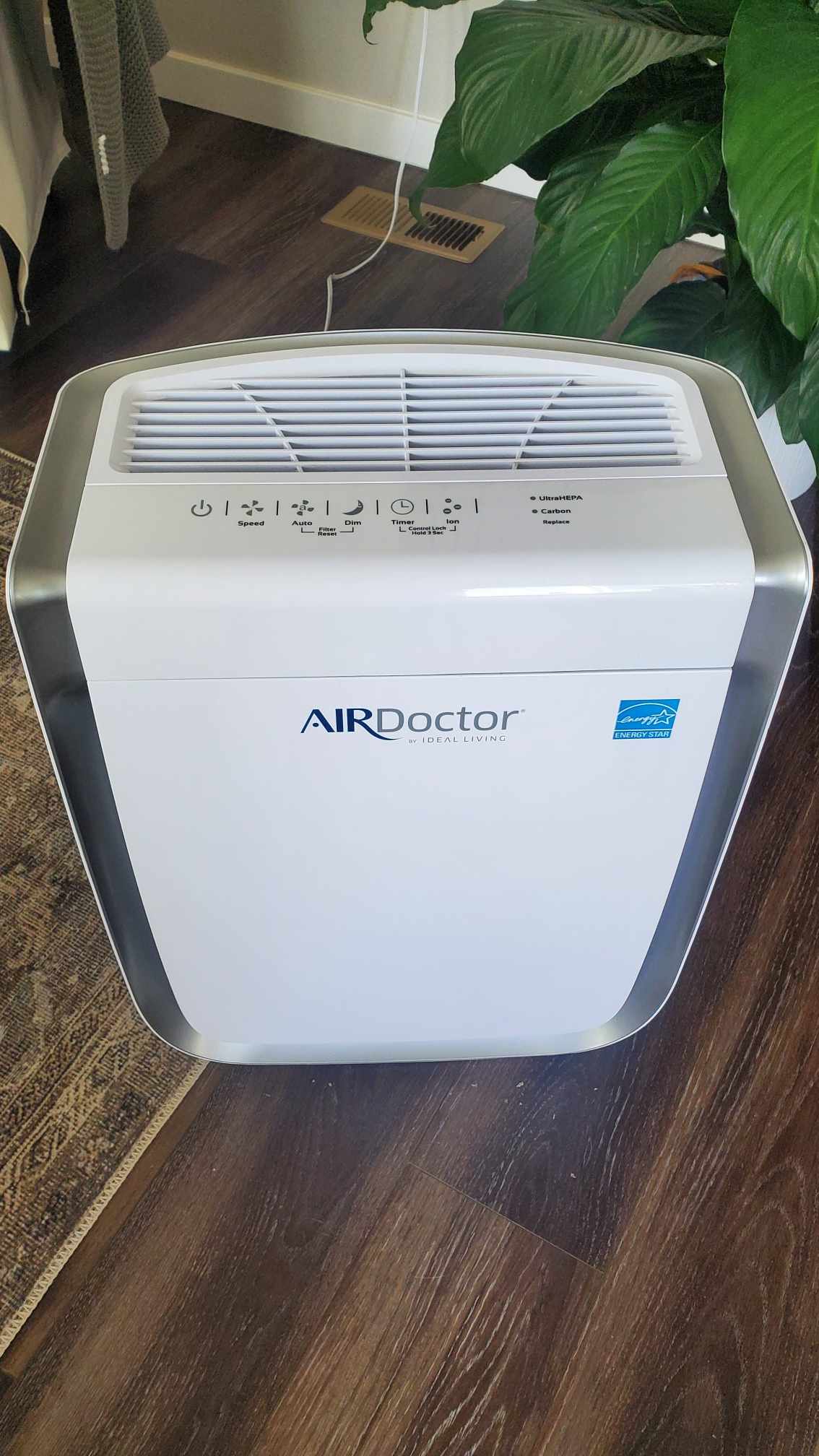
AirDoctor
The AirDoctor boasts an UltraHEPA filter designed to capture the smallest airborne particles and is backed by a carbon filter to reduce VOCs, gases, and odors. Different models can cover up to 1000 sq. ft. and operate quietly. The carbon filter traps all volatile chemicals. We have the AD3500 model in our living room that is on 24/7 and the filter change light came on after 16 months of use. I consider this very efficient and budget-friendly. Check out their Earth Day sale here.
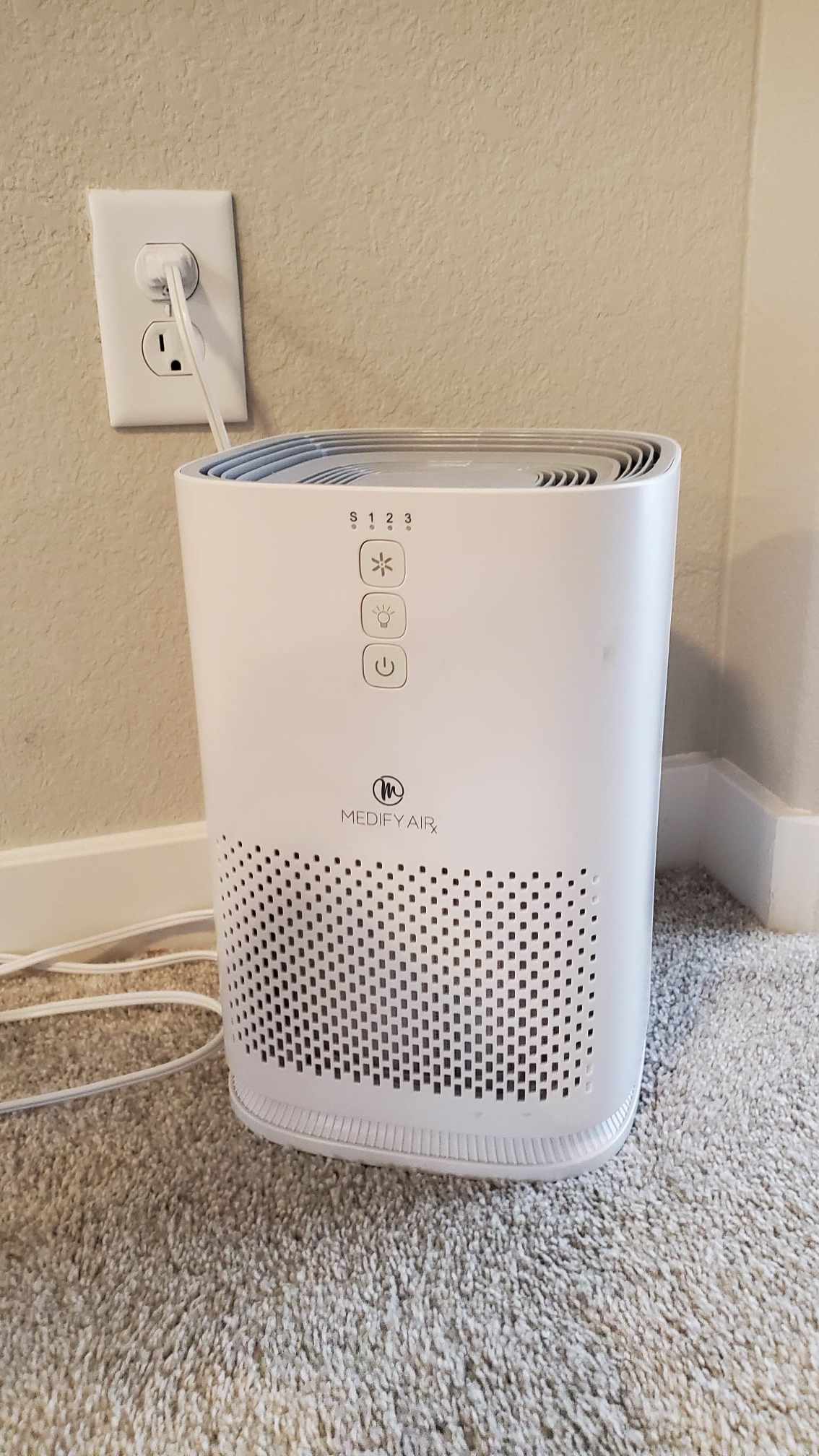
Medify Air
Medify Air offers a range of models to suit different spaces. The H13 True HEPA filter captures 99.9% of airborne particles, while the optional ionizer helps to reduce particles further. Depending on the model, Medify Air can cover up to 1,600 sq. ft. We own a few of their smaller models for our bedrooms and there is an MA-25 model in the chiropractic clinic. The company offers a lifetime warranty on its machines. Use this 15% off discount code: szabina15 if you plan to get this for your home.
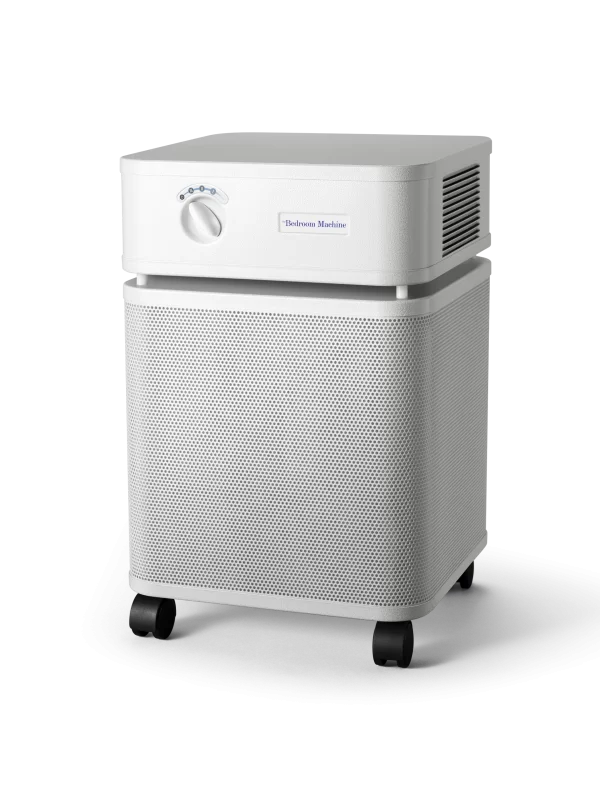
Austin Air
The Medical Grade HEPA technology is proven to remove up to 99% of all airborne contaminants as small as 0.1 microns. Health Mate and Health Mate Plus are their most popular models, however, the company offers a special model for those with allergies. If wildfires or mold are your concern check out this brand. FSA and HSA accounts can be used toward the purchase of Austin Air purifiers.
Bonus: IQAir
IQAir is known for its HyperHEPA filter, which traps ultrafine particles down to 0.003 microns. It offers models that can handle spaces up to 1,125 sq. ft., as well as MultiGas filters for those concerned with chemical pollutants. The higher-end models are pricier but effective. The Swiss-made medical-grade technology claims to filter biological contaminants, bacteria, and viruses, including SARS-CoV-2. The basic model starts at $799.
Bringing It All Together
Maintaining clean air in your home can seem like a challenge but with the right strategies, you can keep your home feeling fresh and allergen-free. Combine natural methods like opening windows and adding houseplants with regular cleaning and vacuuming to maintain a healthy environment. If you want extra reassurance, consider investing in one of the top air purifiers.
Conclusion
Spring is a time for renewal and fresh starts, and that includes your indoor air. By following these tips and exploring the air purifier options mentioned above, you can breathe easier and enjoy the best of the season without the sniffles. Happy spring cleaning!
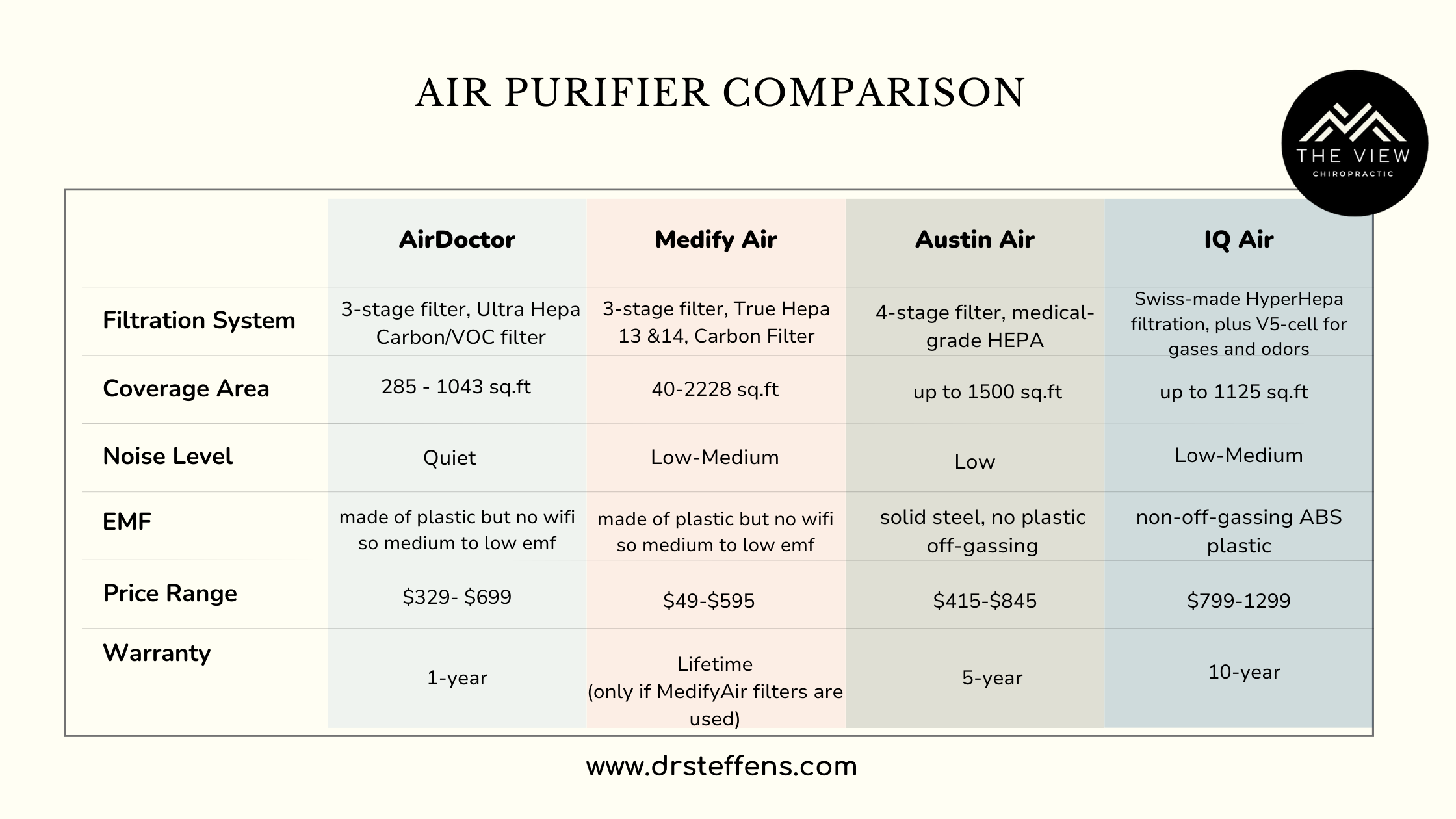
YOU MIGHT BE INTERESTED IN:

Chiropractic Treatment for Headaches: A Drug-Free Alternative
Find Fast Relief: Chiropractor for Headache Relief Near MeNearly 50 million Americans

The Link Between Posture and Productivity: Tips for Denver Office Workers
Table of Contents Denver Office Posture Tips In the fast-paced world of
5 Natural Ways to Relieve Back Pain Without Medication
5 Natural Ways to Relieve Back Pain Without Medication Back pain. It’s

Healthy Autumn Recipe
Sweet Potato Soup As the crisp autumn air begins to settle in,

How Chiropractic Care Can Boost Your Immune System
In a world where immune health is on everyone’s mind, it’s time
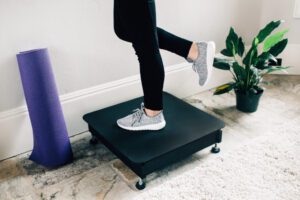
The Vibrating Path to Health: 8 Benefits of Whole-Body Vibration Therapy
Ready. Set. Vibe. Table of ContentsReady. Set. Vibe.Understanding Vibration MachinesAdditional Health Benefits

